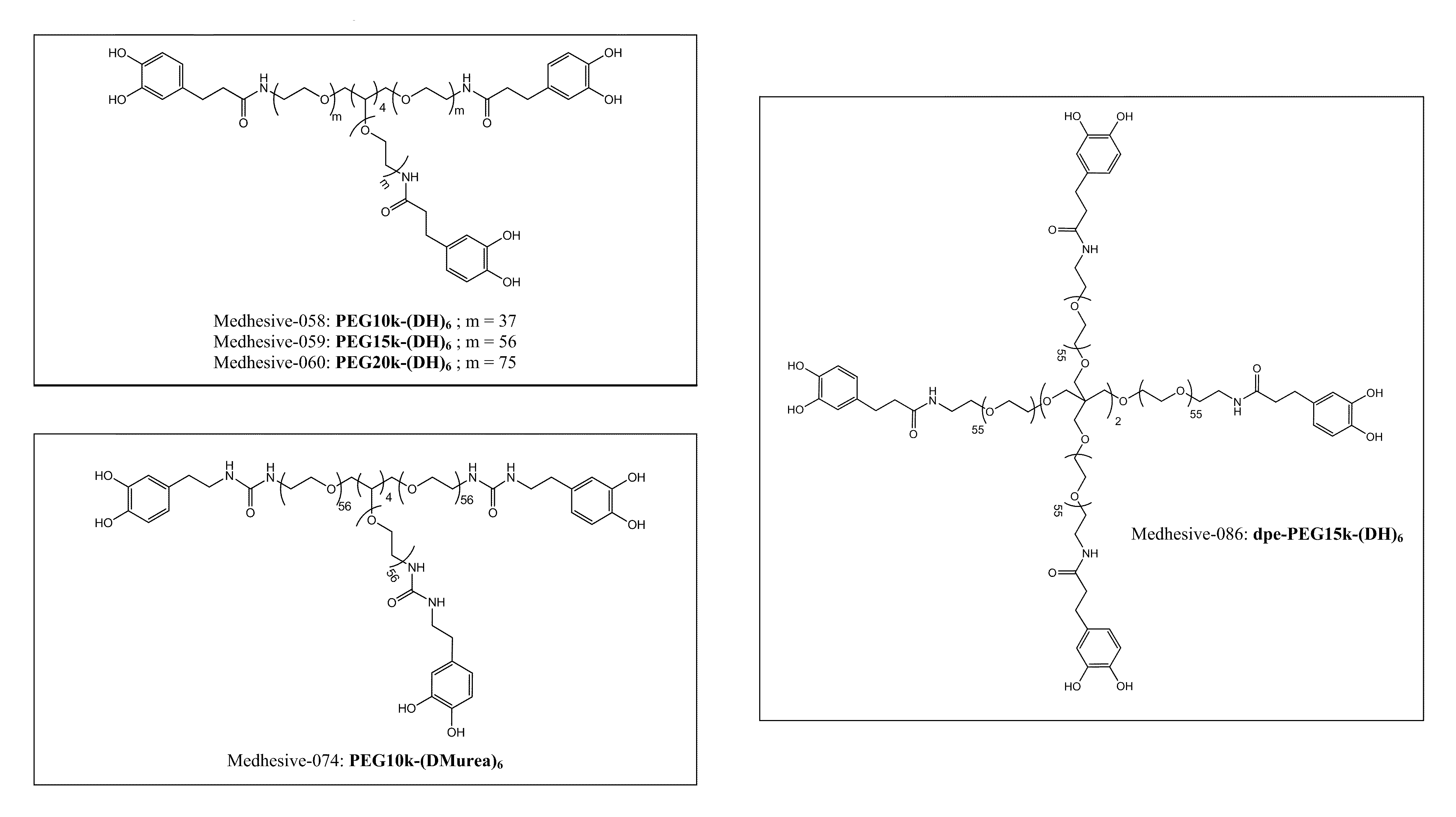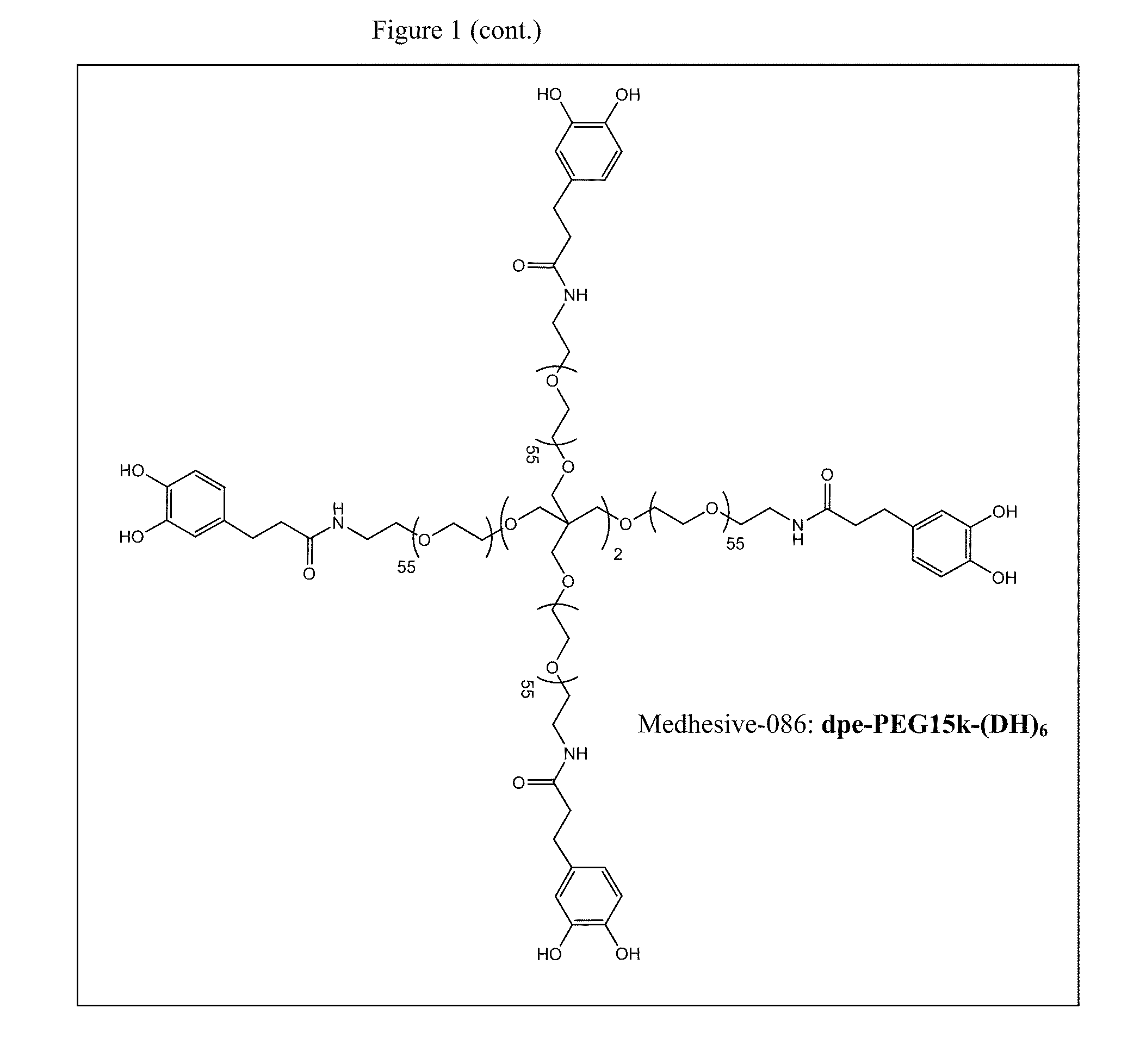Multi-armed catechol compound blends
a technology of catechol and compound, applied in the direction of surgical staples, prostheses, peptides, etc., can solve the problems of poor tissue adhesion characteristics, stiffness and brittleness in mechanical properties, etc., to inhibit or reduce the growth of biofilm (bacteria), control bleeding, and control bleeding
- Summary
- Abstract
- Description
- Claims
- Application Information
AI Technical Summary
Benefits of technology
Problems solved by technology
Method used
Image
Examples
examples
Synthesis of Medhesive-063 (PEG20k-(DH)8)
[0751]51 g of 8-Armed PEG-NH2 (20,000 MW; 21 mmol —NH2) was dissolved with 234 mL of chloroform and 116 mL of DMF. 6.0 g of DOHA (33 mmol), 4.4 g of HOBt (33 mmol), 12 g of HBTU (33 mmol), and 6.9 mL of triethylamine were added. The reaction mixture was stirred at room temperature for one hour and added to 2400 mL of diethyl ether. The precipitate was dissolved in 350 mL of 12 mM HCl and dialyzed (3,500 MWCO) with deionized H2O (acidified to pH 3.5 with concentrated HCl) for 24 hrs and lyophilized. Medhesive-058 PEG10k-(DH)6, Medhesive-059 PEG15k-(DH)6, and Medhesive-060 PEG20k-(DH)6 were created using similar procedures using corresponding starting material PEGs (6-armed PEG-NH2 10,000 MW, 6-armed PEG-NH2 15,000 MW, and 6-armed PEG-NH2 10,000 MW, respectively). Both 1H NMR and UV-vis were used to quantify the amount of PEG-bound catechol.
[0752]PEG20k-(DH)8 [Medhesive-063] L / N's 001479, 001490 and 002216. 1H NMR (400 MHz, D2O): δ 6.84-6.67 (m...
PUM
| Property | Measurement | Unit |
|---|---|---|
| molecular weights | aaaaa | aaaaa |
| molecular weights | aaaaa | aaaaa |
| molecular weights | aaaaa | aaaaa |
Abstract
Description
Claims
Application Information
 Login to View More
Login to View More - R&D
- Intellectual Property
- Life Sciences
- Materials
- Tech Scout
- Unparalleled Data Quality
- Higher Quality Content
- 60% Fewer Hallucinations
Browse by: Latest US Patents, China's latest patents, Technical Efficacy Thesaurus, Application Domain, Technology Topic, Popular Technical Reports.
© 2025 PatSnap. All rights reserved.Legal|Privacy policy|Modern Slavery Act Transparency Statement|Sitemap|About US| Contact US: help@patsnap.com



